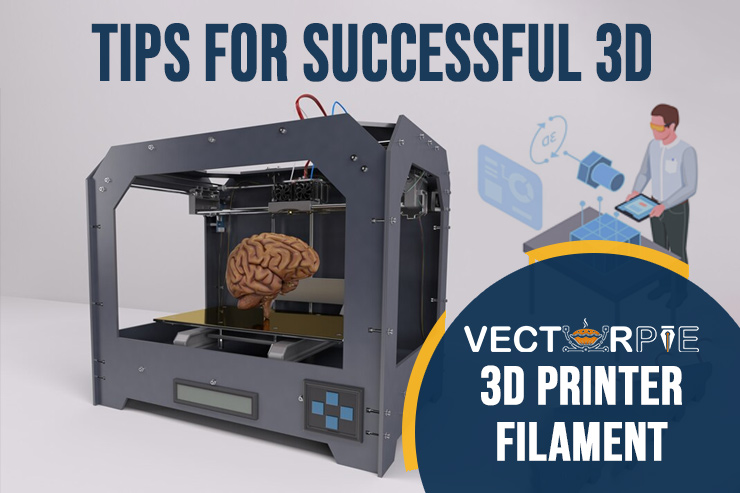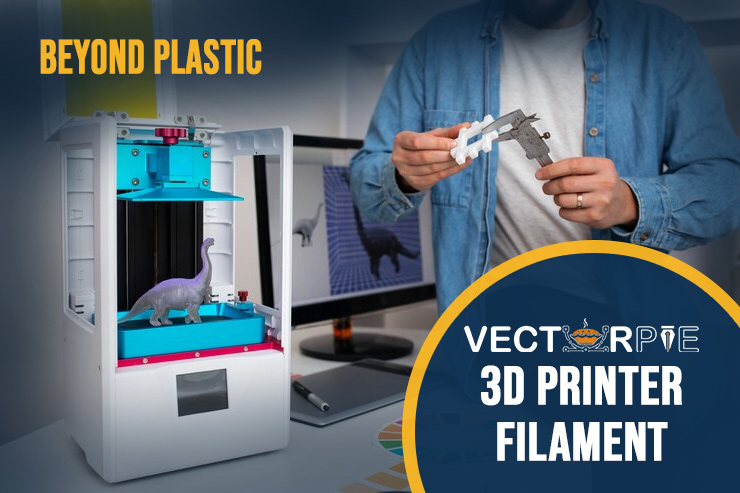If you’ve delved into the realm of 3D Printer Filament, you’re likely familiar with the crucial role filament plays in bringing your creations to life. While plastic filaments are widely used, there exists a fascinating array of materials beyond plastic that can elevate your prints to new levels of functionality, aesthetics, and innovation. In this comprehensive guide, we’ll delve into the diverse world of 3D printer filaments, exploring materials ranging from metals to composites, flexible options, eco-friendly choices, and more. Let’s embark on a journey to discover the endless possibilities beyond plastic filaments in the realm of 3D printing.
Understanding 3D Printer Filaments
What is 3D Printer Filament?
3D printer filament is the raw material used in fused deposition modeling (FDM) 3D printers to create physical objects layer by layer. It comes in spools of varying sizes and materials, each offering unique properties that influence the final outcome of your prints.
Types of 3D Printer Filaments
Plastic Filaments
- PLA (Polylactic Acid): A biodegradable and easy-to-print filament known for its vibrant colors, low warping, and eco-friendliness.
- PETG (Polyethylene Terephthalate Glycol): Combines the strength of ABS with the ease of printing of PLA, offering excellent layer adhesion and minimal shrinkage.
Beyond Plastic: Alternative Filaments
Metal Filaments
- Brass, Copper, Bronze: Metal-infused filaments allow you to create prints with a metallic finish, ideal for jewelry, figurines, and decorative items.
- Stainless Steel: Offers strength and durability, suitable for functional prototypes, tools, and mechanical parts.
Wood Filaments
- Wood PLA/PLA+: Contains finely ground wood fibers, giving prints a realistic wood-like appearance and texture. Ideal for artistic creations, furniture prototypes, and decor items.
- Bamboo PLA: Similar to wood filaments but with the unique grain patterns of bamboo. Produces lightweight and environmentally friendly prints.
c
- Carbon Fiber PLA/ABS: Reinforced with carbon fiber strands, these filaments offer exceptional strength, stiffness, and heat resistance. Perfect for engineering parts, drones, and automotive components.
Flexible and Elastic Filaments
- TPE (Thermoplastic Elastomer): Flexible, rubber-like filaments that can stretch and bend without breaking. Great for creating gaskets, seals, and wearable items.
- TPU (Thermoplastic Polyurethane): Combines flexibility with abrasion resistance, making it suitable for phone cases, shoe soles, and impact-absorbing parts.
Glow-in-the-Dark Filaments
- PLA Glow-in-the-Dark: Contains phosphorescent materials that absorb light and emit a soft glow in the dark. Fun for creating novelty items, Halloween decorations, and educational models.
Conductive and Magnetic Filaments
- Conductive PLA/ABS: Infused with conductive materials, allowing you to create circuits, sensors, and electronic components directly in your prints.
- Magnetic Iron PLA: Contains iron powder, making prints magnetically receptive. Ideal for creating magnetic puzzles, educational toys, and interactive displays.
Biodegradable and Eco-Friendly Filaments
- PHA (Polyhydroxyalkanoate): A biodegradable filament derived from renewable resources such as corn starch or sugar cane. Offers similar properties to PLA but with enhanced biodegradability.
- Recycled PETG: Made from recycled plastic bottles, this filament reduces waste and environmental impact while offering the strength and versatility of PETG.
Choosing the Right Filament for Your Project
Considerations When Selecting Filaments:
1. Printed Object’s Purpose
- Functional Prototypes: Opt for durable filaments such as ABS or PETG for mechanical strength and heat resistance.
- Decorative Items: Experiment with wood, metal, or glow-in-the-dark filaments for unique textures and finishes.
- Flexible Parts: TPE or TPU filaments are ideal for creating flexible hinges, gaskets, and seals.
2. Printed Object’s Environment
- Indoor Use: PLA, wood, or recycled PETG are excellent choices for prints that will be displayed indoors due to their low emissions and environmental impact.
- Outdoor Use: Consider materials like stainless steel or carbon fiber for prints that require weather resistance and durability.
3. Printing Requirements
- Printability: Some filaments, such as carbon fiber or metal-infused, may require specialized nozzles or print settings due to their abrasive nature.
- Bed Adhesion: Consider using adhesive sprays, tapes, or specialized build surfaces for materials prone to warping or detachment.
Tips for Successful 3D Printer Filament

1. Temperature Settings
- Follow the manufacturer’s recommended temperature settings for optimal print quality.
- Experiment with nozzle temperatures and bed temperatures to find the right balance for your chosen filament.
2. Print Speed and Cooling
- Adjust print speeds to accommodate the specific properties of your filament. Flexible filaments often require slower speeds to prevent stringing.
- Use cooling fans to control filament cooling and improve print quality, especially for materials prone to overheating.
3. Nozzle Maintenance
- Check and clean your printer’s nozzle regularly, especially when switching between different filament types.
- Consider using hardened steel or ruby nozzles for abrasive filaments like carbon fiber or metal.
4. Bed Preparation
- Ensure proper bed leveling and adhesion techniques to prevent warping or detachment during printing.
- Apply adhesive solutions like glue sticks, hairspray, or specialized bed adhesives for materials with poor adhesion properties.
5. Post-Processing and Finishing
- Sand, polish, or paint prints made with wood, metal, or carbon fiber filaments to enhance their appearance.
- Use acetone vapor smoothing for ABS prints to achieve a smooth, glossy finish.
Exploring Creativity with Alternative Filaments
1. Artistic Sculptures and Figurines
- Create lifelike sculptures with wood or stone-like textures using wood or stone-infused filaments.
- Craft intricate jewelry pieces with metal or gold-infused filaments for a touch of elegance and uniqueness.
2. Functional Prototypes and Tools
- Develop durable and lightweight prototypes for engineering parts using carbon fiber or glass fiber filaments.
- Print custom tools, jigs, and fixtures with magnetic or conductive filaments for specialized applications.
Conclusion: Unleash Your Creativity with Alternative Filaments
The world of 3D printing is evolving, and with it, the possibilities for creativity and innovation are expanding. Beyond traditional plastic filaments, a diverse array of materials awaits, each offering unique properties and applications to enhance your prints.
Whether you’re crafting functional prototypes, artistic sculptures, educational models, or personalized accessories, alternative filaments provide a canvas for your imagination to flourish. From the natural textures of wood to the strength of carbon fiber, the choices are vast and inspiring.
As you embark on your journey into the world of alternative filaments, remember to explore, experiment, and push the boundaries of what’s possible. Consider the properties of each material, the requirements of your project, and the impact on the environment as you make your filament selections.
So, dive into the realm of 3D printing with alternative filaments, and let your creativity soar. Create objects of beauty, utility, and innovation that captivate the senses and leave a lasting impression. With each print, you’re not just making objects—you’re shaping a world of endless possibilities.
